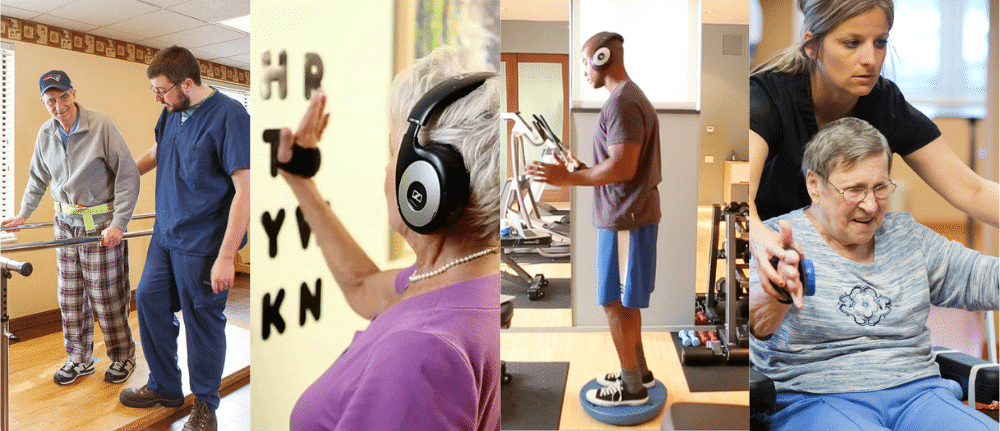
This informative course will provide an overview of the science, clinical application and portability of Interactive Metronome for adults with a variety of conditions in order to accelerate and exceed functional rehabilitation outcomes. In addition, participants will be introduced to the IM Fall Risk Reduction Program, a revolutionary approach that emphasizes the use of IM training in inpatient, outpatient and home healthcare settings to directly address areas of patient function that contribute to falls: impaired balance and gait, transfers, attention, impulsivity and fear of falling. Cases will be discussed.
*Contact hours/ASHA and AOTA CEUs are offered pending successful completion of a written exam at the end of the course.
Target Audience:
This course welcomes the following professionals who have completed the Interactive Metronome Certification Course.
- Speech and Language Pathologist
- Speech and Language Pathology Assistant
- Audiologist
- Occupational Therapist
- Occupational Therapy Assistant
- Physical Therapist
- Physical Therapy Assistant
- Athletic Trainer
- Licensed Medical, Rehabilitation or Mental Health Professional
- Chiropractor
- Music Therapist
Presented by Amy Vega, MS, CCC-SLP, Clinical Education Director for Interactive Metronome

Amy Vega, MS, CCC-SLP received her master’s degree in speech-language pathology from the University of South Florida in 1994 and holds the Certificate of Clinical Competency from the American Speech-Language & Hearing Association (ASHA). She specializes in adolescent and adult rehabilitation for patients diagnosed with traumatic brain injury, stroke, epilepsy, brain tumor & and other disease processes that affect communication, cognition, and behavior. She currently serves as Director of both the Clinical Education Department and the Clinical Advisory Board for Interactive Metronome, Inc. and is their Continuing Education Administrator. Amy collaborates with researchers, provides clinical support to IM providers around the globe, develops the IM certification course and other continuing education, and is the master-trainer for IM certification instructors.
Learning Outcomes:
Upon completion of this course, participants will be able to:
- Provide a minimum of 3 references that provide evidence of the effectiveness of Interactive Metronome;
- List the 4 major components of motor learning and how IM impacts each;
- Name at least 3 areas of function that may be positively impacted by timing & rhythm training.
*Note: This course covers information that pertains to licensed therapists and therapy assistants. OTA and PTA professionals must practice IM under the supervision of a licensed OT or PT.
Specific Learning Outcomes for Speech-Language Pathologists & Audiologists:
- Provide a minimum of 3 references that provide evidence of the effectiveness of Interactive Metronome for cognitive and communication disorders;
- Name 3 conditions commonly seen by Speech-Language Pathologists in adult rehabilitation that may benefit from timing & rhythm training with Interactive Metronome.
*Note: This course covers information that pertains to licensed therapists and therapy assistants. SLPA professionals must practice IM under the supervision of a licensed SLP.
Interactive Metronome Case Studies

Brain Injury
Read this case study about Adam, a 28-year-old male, who had sustained an anoxic event along with a seizure due to drug interactions. In addition to full cognitive treatment for his brain injury, Interactive Metronome (IM) training was added to his program to address both his cognitive and physical deficits.
“He indicated that he is now better able to concentrate, focus, and understand key points more clearly. He also said that he is less impulsive and has more patience.”

Stroke
Read this case study about John, a 47-year-old male, that had suffered a CVA. IM was suggested as a modality to help improve John’s therapy outcomes.
“John successfully passed his driving evaluation and began driving again. He even returned to work full time. John had met his goals and is happy to be back to his normal routine.”
